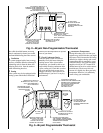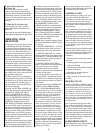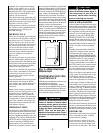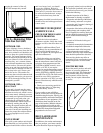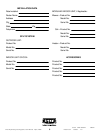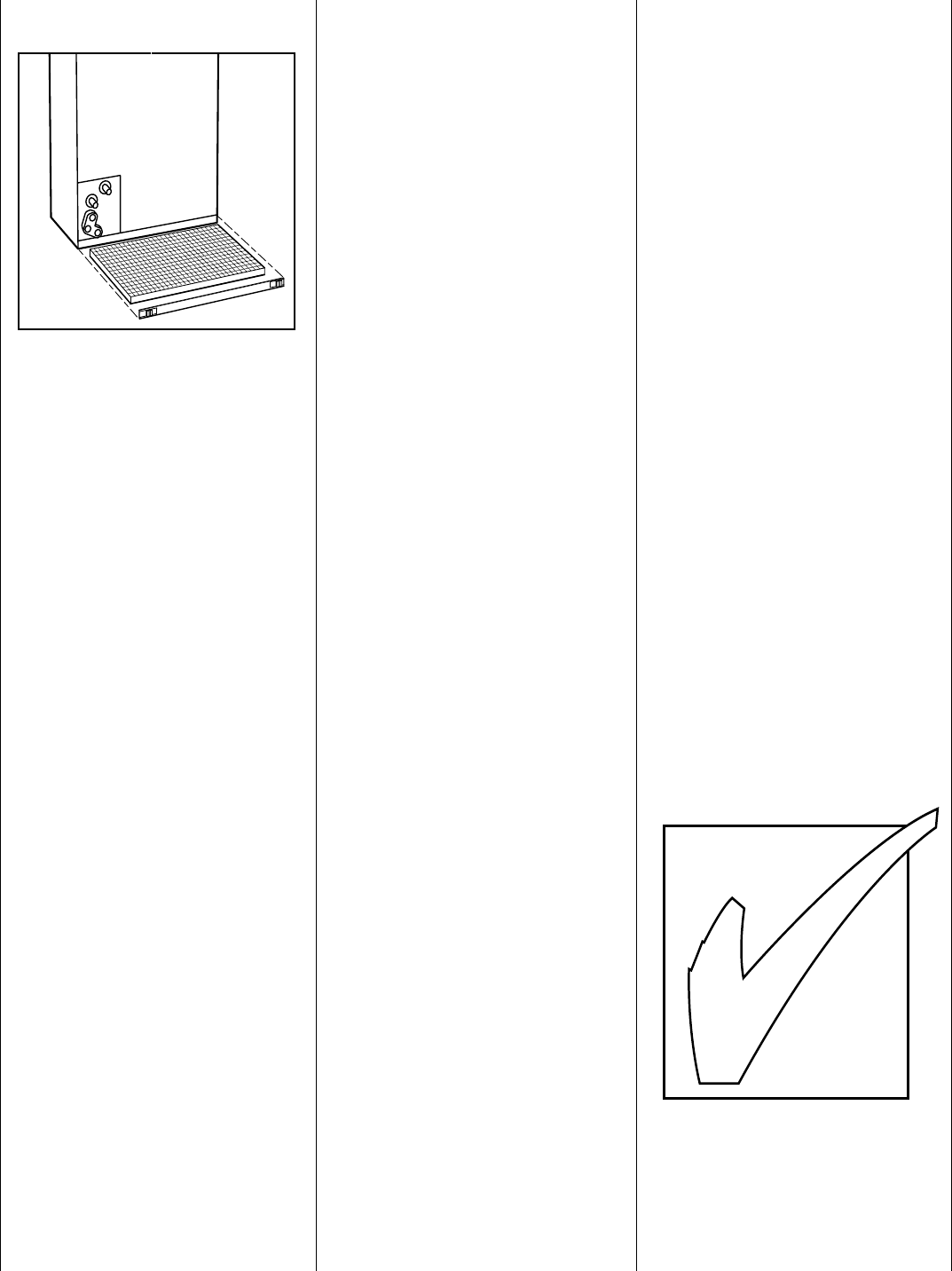
6
require the removal of the coil.
DO NOT attempt this yourself.
OUTDOOR COIL
If grass clippings, leaves, shrubbery,
and debris are kept away from the out-
door unit, minimal care should be suf-
ficient to keep the system functioning
properly. For proper drainage, debris
must be removed periodically from the
base pan. However, if the outdoor coil
becomes dirty, use a vacuum cleaner
with soft brush attachment to clean the
exterior surface. Vacuum coil surface
using an up and down motion. Be care-
ful not to bend or damage coil fins. If
dirt is deep in the coil, contact your
dealer for service. The outdoor fan
motor may have to be disconnected and
the top panel removed to gain access to
the coil for thorough cleaning. Do not
attempt this yourself.
OUTDOOR COIL—
SEA COAST
If your unit is located near the ocean,
special maintenance is required. Ocean
mist/breeze carries salt, which is corro-
sive to most metals. Although your new
unit is made out of galvanized metal and
is protected by top-grade paint, you
should take the precaution of addi-
tional maintenance which consists of
periodically washing the unit. By
washing all exposed surfaces and coil,
you will be adding additional life to
your unit. Consult your installing con-
tractor for proper intervals/procedures
for your geographic area or service
contact.
UNIT SUPPORT
Your split-system outdoor unit should
be maintained at a level position. If its
support should shift or settle so that the
unit is no longer level, you should
correct the condition. Relevel it
promptly to assure that water drains out
of the unit. If you notice that water or
ice collects beneath the unit, arrange
for it to be drained away from the
unit.
Heat pumps installed in snowbelt areas
should be elevated with support feet or
a snow stand.
BEFORE YOU REQUEST
A SERVICE CALL
CHECK FOR THESE EASILY
SOLVED PROBLEMS:
• Check the indoor and outdoor
disconnect switches. Verify that circuit
breakers are ON or that fuses have not
blown.
• Check for sufficient airflow. Check
the air filter(s) for any accumulations of
dirt. Check for blocked return-air or
supply-air registers. Be sure registers are
open and unobstructed.
• Check the settings on your indoor
thermostat. If you desire cooling, see
that the temperature control selector is
set below room temperature and the
SYSTEM or MODE control is set to
COOL or AUTO. If you require
warmth, be sure the temperature control
selector is set above room temperature
and the SYSTEM or MODE control is
set to HEAT or AUTO. The FAN control
should be set to ON for continuous
blower operation or AUTO if you wish
blower to function only while the unit is
operating.
• Check note concerning special fea-
tures and time delays in “Operating
Your Heat Pump” section.
If your comfort system still fails to
operate, contact your servicing dealer for
troubleshooting and repairs. Specify your
apparent problem, and state the model and
serial numbers of your equipment. (You
should have them recorded on the last
page of this booklet.) With this informa-
tion, your dealer may be able to offer
helpful suggestions over the phone or save
valuable time through knowledgeable
preparation for the service call.
REGULAR DEALER
MAINTENANCE
In addition to the routine maintenance
that you perform, your home comfort
system should be inspected regularly
by a properly trained service technician.
The inspection (preferably twice each
year, but at least once every year) should
include the following:
• Routine inspection of air filter(s).
Replacement or cleaning as required.
• Inspection and cleaning of the blower
wheel, housing, and motor as required.
• Inspection and, if required, cleaning of
indoor and outdoor coils.
• Inspection of the indoor coil drain pan,
plus the primary and secondary drain
lines. If supplied, the auxiliary drain pan
and line should be inspected at this time.
Service should include cleaning if
required.
• A check of all electrical wiring and
connections.
• A check for secure physical connections
of individual components within units.
• Operational check of the heat pump
system to determine actual working
condition. Necessary repair and/or adjust-
ment should be performed at this time.
Your servicing dealer may offer an
economical service contract that covers
seasonal inspections. Ask for further
details.
FOR THE RECORD
Record the model, product, and serial
numbers of your new equipment in
the spaces provided. This information,
along with the other ready-reference
facts requested, will be necessary
should you ever require information
or service.
Fig. 5—Removing Filter
from Fan Coil Unit





